How much is one second less worth to you?
It might depend on how much time – as well as money – it costs you.
Submitted for your review: The ’24 Genesis GV70 electric crossover. It is capable of accelerating to 60 MPH is just 3.8 seconds. However, it only goes 236 miles on a charge – and that assumes you do not often make use of its acceleration capabilities, as doing so will result in the same as making use of a powerful V8’s capabilities:
Your range will be less – and sooner.
But your wait will be longer.
You’ll have to decide whether that cost is worth paying.
As well as the cost of the GV70 electric, itself.
What It Is
The GV70 EV is a GV70 with a standard electric drivetrain in place of the non-EV GV70s two available turbocharged gas-engine drivetrains. It also comes standard with all-wheel-drive, which is optional with the non-EV GV70 – as well as a 20 inch wheel/tire package (optional with the non-EV GV) and a “road sensing” adaptive suspension system. Both are otherwise essentially the same, which means they are both compact-sized luxury-performance crossovers offered by Genesis, the luxury division of Hyundai-Kia.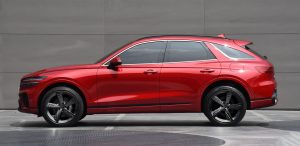
Except for what they cost.
The GV70 EV is offered in one high-end trim, with a base price of $66,450. The non-EV GV70 starts at $44,900 for the base 2.5T version; a top-of-the-line 3.5T – which is the version that’s one second less quick to 60 than the GV70 EV – stickers for $57,500.
That’s what one second less will cost you, in other words.
Plus the wait – if you make use of that capability regularly.
The GV70 EV is the latest electrified Genesis model; it made its debut last year as an all-new model and the changes for ’24 are minimal. All ’24 GV70 EVs now come standard with the formerly optional WiFi hot spot and there are five new colors on the palette.
What’s Good
Launches like a bottle rocket.
Doesn’t look like it’s electric.
Has all the other appeals of the non-EV GV70.
What’s Not So Good
Speed costs money – and time.
As is true of all EVs, be aware that charging at home takes even more time – and also costs money (to wire up the house for “Level II” charging capability).
As is true of almost all new vehicles, touchscreen interface can be distracting to operate while driving.
There is no engine – or transmission – in the EV GV70.
Instead, there are a pair of electric motors, one directly driving the front wheels, the other directly driving the rear wheels (and so all four wheels are driven, directly). These are powered-up by a 77.4 kWh battery pack and the combo is good for 483 horsepower and 516 ft.-lbs. of torque, available as soon as you push on the accelerator pedal – because electric motors produce maximum torque immediately, unlike gas (or diesel) burning engines that must rev to a certain RPM to make their maximum torque.
The result of all this power – horsepower and right-now torque – is a GV70 that can accelerate to 60 MPH in 3.8 seconds. That is about 1 full second sooner than a non-EV GV70 with its optional 3.5 liter (375 horsepower) V6 can get there.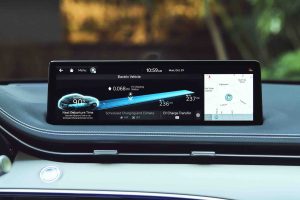
You might think it ought to take longer than that for the V6 -powered GV70 to get there, given how much stronger the EV GV70 is. But speed is also a question of weight – and the EV GV70 weighs 5,060 lbs. empty. With one 200 pound driver on board, it weighs nearly 5,300 lbs. – or not far from as much as a full-size, V8-powered truck weighs.
In contrast, the non-EV GV70 3.5 T weighs 4,453 lbs. Being some 500 pounds lighter than the EV GV70 explains why the non-EV GV70 is almost as quick as its much more powerful electrified sibling.
It also goes much farther.
With a full tank of gas, the V6-powered GV70 can go 313 miles in city driving and 417 on the highway – the latter not far from twice as far as the EV GV70’s maximum range (either way) of just 236 miles.
And it’s not just twice as far – just about.
It’s also five times-plus as long – to recharge. That’s at a commercial high-voltage “fast” charger, where Genesis says the EV GV can recover 80 percent charge in about 20 minutes. It takes much longer at home – where the “fastest” you can recharge any EV is several hours at the least.
It’s also less – even at the “fast” charger – because these are set up to deliver a maximum of 80 percent charge, in order to avoid harming the battery or increasing the danger it’ll catch fire (as a result of getting overheated).
This is the case with every EV, by the way.
But the point is unless you have the time to wait for the remaining 20 percent to slow charge – which could take another hour or longer on top of the 20 minutes you spent “fast” charging – you’ll leave with just 80 percent of the battery’s fully charged range. In the case of the EV GV70, that would be 192 miles – which is less than half the highway range of the non-EV GV70 3.5T.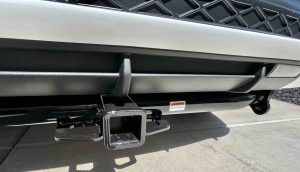
And it’s actually less than that – because with EVs, it’s necessary or at least, prudent – as a precaution – to keep say 20 or so miles of range always in reserve, just in case you don’t make it to where you planned to charge (it might be closed, the chargers might not be working; someone else might be ahead of you, etc.). Because unlike a gas-powered car, when an EV runs low on range, you can’t just get charged up pretty much anywhere in just a couple of minutes.
And if you run out of charge, the EV bricks.
So an EV like the GV70 has a real-world range of about 150 miles – unless you’ve had time to bring the battery up to fully charged. Which will cost you time, every time.
Genesis says the EV GV can pull up to 3,500 lbs. – but be aware that pulling that will likely cost you range (and time).
On The Road
Push the “boost” button located on the steering wheel at the six o’clock position, floor the accelerator – and experience the kind of acceleration you used to have to buy a Ferrari (not the Magnum, PI model) to experience.
The compressive forces have to be felt to be appreciated, though a 3.8 second to 60 time does convey something of the way it feels. To put this number in some perspective, a 1966 AC Cobra 427 – one of the quickest, highest-performance sports cars ever made – is only slightly quicker than this crossover SUV. The Shelby Cobra – with a ferocious 427 cubic inch V8 – took 3.4 seconds to get to 60. And it was was an ultra-light two-seater without AC, heated seats or a roof and side windows.
This five seater luxury-performance crossover almost out-performs it.
But, there’s a catch. Or rather, a conundrum.
Like mosty EVs, the EV GV70 touts its ability to accelerate – as it ought to, because it is capable of extremely impressive acceleration. This is arguably the main sell – or reason for buying it vs. the gas-engined version.
However, if you make more than occasional use of the EV GV70’s capability to accelerate quickly, it will rapidly deplete what little range you had when you started.
Remember – that’s just 236 miles, best case.
Drive the EV GV70 the way it can be driven and you won’t be driving very far. You might say: Well, don’t drive it that way, then! Ok, but then what is the point of having capability that comes with such liability?
Of course, the AC Cobra had liabilities, too. But the people who bought one didn’t care that it was useless for anything other than racing – because that was what it was built to do. That it was loud, hot and hard to drive – if you didn’t really know how to drive – these were irrelevances because it was extremely quick (and very fast) and that was all that mattered.
Ironically, EV range could be much more than it is – if EV manufacturers weren’t so eager to tout how how quick their EVs are. Which they tout because they don’t have much range . . . in part because they need those big (and heavy) batteries to store the power needed to accelerate quickly . . . without coming to a stop, quickly.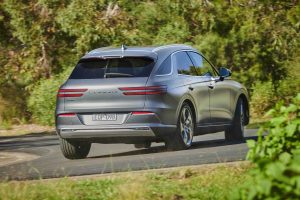
That business aside, the EV GV is a lovely place to spend time in – whether you’re driving or waiting. Genesis goes farther than pretty much every other luxury brand shy of ultra-luxury brands such as Daimler’s Maybach brand when it comes to finishing their vehicles, especially inside. When you floor the accelerator, your head is cushioned by pillow-topped headrests; every surface looks (and feels) rich – and so you do, too.
Despite being very heavy for its size, it doesn’t feel it – including laterally. This crossover doesn’t lurch; its agility may surprise you as much as its acceleration delights you.
One of the ways the EV GV70 recovers its range is via using the motors to slow as well as accelerate the vehicle. As you lift off the accelerator, it feels as if the brakes are coming on. They aren’t – unless you apply them. That braking feel you’re feeling is the motors converting the kinetic energy of motion into electrical energy, which is fed back to the battery. The easiest way to understand this is to look upon the motors as generators, which is just the function they’re performing when they are used to slow the vehicle.
Using this capability allows for one-pedal fine-tuning of momentum. It also saves wear and tear on the brakes.
At The Curb
You’d never know this GV is an EV by looking at it.
There is almost no visual difference between the EV GV70 and its non-EV sibling, except for one small exterior difference that kind of gives it away – if you happen to notice it. Which you probably won’t, because it’s that subtle.
It is the absence of a gas door.
Or a charge door that looks like one.
At least, one that looks like a gas door – which is what most EVs have on their rear quarter panel or one or the other front quarter panels. The EV GV70’s charge door is built into the grille and it’s so hard to see it you probably won’t.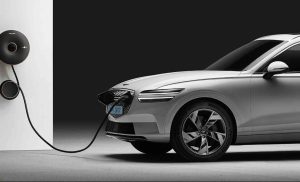
This is deliberate – and it’s an interesting take on the whole EV thing in that Genesis doesn’t make a big deal about its EVs being EVs. In fact, the opposite. The GV EV looks like a GV that isn’t an EV because it is a GV.
Except insofar as what propels it.
Just the same as the EV version of the G80 – Hyundai’s mid-sized luxury sedan – is a G80. They aren’t separate EV-only models, as many (like Teslas) are or are obviously electric, as most of the rest look. They are electric versions of existing Genesis models.
This will appeal to people who want an EV but aren’t interested in making a big deal about it. Or who want a GV70 (or G80) that is electrically powered.
The charge door’s location is also smart in that it puts it closest to where the outlet in your garage probably is. I was able to park the EV GV70 outside of mine – and still plug it in – because the location of the port was close enough for the cable to easily reach it from the outlet in my garage without having to back the car into my garage in order to get it close enough for the cord to reach. It also lets you drive right up to a commercial “fast”charger – as opposed to having to back up to it.
And you’ll want to keep it plugged in – when you’re at home – because if you don’t, you’ll find out about seepage overnight. EVs use electricity to power their thermal management systems – i.e., the system that prevents the battery from getting too cold (or hot) while the car is parked.
EVs assume garage ownership, in other words – as it’s hard to keep an EV plugged in if you have to park it on the street.
The Rest
Because it’s more expensive, the EV GV is also more equipped than the non-EV GV. You can equip it even further with the optional Prestige package that bundles upgraded leather for most of the interior surfaces, along with a microfiber suede headliner, heated rear seats (and steering wheel) plus a top-shelf 15 speaker Lexicon audio system (in place of the otherwise standard eight speaker system).
The EV GV’s chief weakness is arguably not so much its modest range – a weakness shared by most EVs. It is the related problem of recovering it, especially at home.
People hear about “fast” charging all the time. What they don’t hear nearly as often is that (for the most part) “fast” charging isn’t feasible at home, because very few homes have the electrical capacity to “fast” charge an EV and the upgrades necessary to make it feasible cost as much as a new EV. That means the “fastest” charging that can be done at home is “Level II,” which cuts the time down to 8-11 hours, depending on the model EV. But, this requires a home panel that has the capacity for an additional dedicated 240V circuit (on its own 30 amp breaker) and some homes don’t have panels that can handle the additional load without modifications, which can cost a couple thousand dollars.
It’s a good idea to make sure you can “Level II” charge at home – and can afford what it might cost to make that feasible – before you buy an EV. If you can’t “Level II” charge at home, you will find that it takes a day or even longer (in the winter) to put any meaningful charge back into an EV, which can mean your electric vehicle ends up being a part-time vehicle.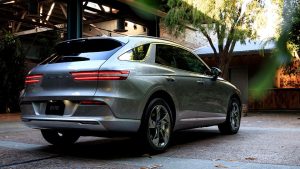
A final thing to check into before you buy any EV is what it will cost to insure it. These costs are often higher because EVs are more expensive to replace – and to repair.
The Bottom Line
Speed – as the saying used to go – is no longer just a question of money. As in – how fast do you want to go?
It also a question of how much time have you got to spend.
. . .
If you like what you’ve found here please consider supporting EPautos.
We depend on you to keep the wheels turning!
Our donate button is here.
If you prefer not to use PayPal, our mailing address is:
EPautos
721 Hummingbird Lane SE
Copper Hill, VA 24079
PS: Get an EPautos magnet or sticker or coaster in return for a $20 or more one-time donation or a $10 or more monthly recurring donation. (Please be sure to tell us you want a magnet or sticker or coaster – and also, provide an address, so we know where to mail the thing!)
If you like items like the Keeeeeeev T shirt pictured below, you can find that and more at the EPautos store!






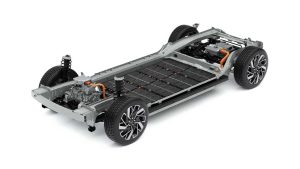
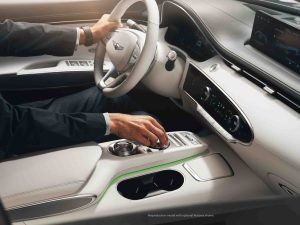







What strikes me about the pics Eric posts showing the rolling chassis of the EV is how absolutely boring I find them. I find Ev’s boring in general.
There is nothing there to imagine about the workings of the beautiful machinery, thought of over 100 years ago; tinkered with and made damn near perfect. Engines, trannys, rear ends; all the complexity and amazement that it works in harmony.
The EV is just a thing, like my toaster. It works, but is so bland that it causes no feeling.
Amen, Dan!
Toasters, indeed. EVs are fundamentally all the same. Like toasters and other appliances. How many different iterations of the same thing are needed? Of course, there are lots of different brands of toasters and perhaps that will work for EVs. But I doubt it, because a car is more than just an appliance. It is something people have a bond with. It is also something very expensive. It is one thing to spend $40 on a toaster. It is another to spend $50k on one that rolls.
I don’t know. Girls bond with their toasters and get with on small appliances.
‘It’s a good idea to make sure you can “Level II” charge at home – and can afford what it might cost to make that feasible – before you buy an EV.’ — eric
The same goes for reviewing EeeVees, if one plans to continue this soul-destroying line of work … or expand it to cover high-performance vacuum cleaners, Consumer Reports style.
Gaining a dozen miles of range after a marathon charging session using the feeble output of a 120-volt circuit just doesn’t cut it. A Level II charger would be a deductible business expense, and a very useful one in our dawning EeeVee World.
Except … except … my fervent hope is that ten years on, the EeeVee Bubble has popped, and millions of Level II chargers in millions of garages are collecting dust.
The other problem with using all that acceleration is you’ll shorten the overall life of the battery. Moving amps generates heat, which the cells have to get rid of quickly or they’ll “pillow,” expanding out. Once that happens it’s pretty much game over. But that’s the worst case scenario. The constant heating of a battery will still do damage even if it isn’t visible to the naked eye.
There’s a goldilocks range for lithium batteries. Too hot, too cold, too high a discharge, not enough use… All that means you need to pay attention. And how you drive affects how long the thing will run.
EV market problems….
Volkswagen CEO – “We Could Lose Everything!” | Volkswagen Won’t Survive This!
The bombshell the CEO of Volkswagen dropped recently is quite unbelievable. Volkswagen’s electric car setback rattles the EV industry, triggering financial fears and casting doubt on their ambitious plans.
https://www.youtube.com/watch?v=pXxBdxTdJoQ
The Car Market is Officially Crashing and Here’s how it impacts you!
https://www.youtube.com/watch?v=ceWDWOIcjbY
Hey Eric. These things are toast. I appreciate everything you’ve said about these POS and will not be waisting my time reading avout them anymore. Thank you for all your work. Dennis. Boston MA – Fired from Massachusetts General Hospital after 22 years for refusing the clot shot – F_ck’em!
Genesis marketing has a tough job trying to talk people into spending 20k more for something that is essentially very much less (outside of that one second….). Just making an electric version of their regular gas models may not be such a great idea when the electric version sits on dealer lots unsold. I don’t know if this is an attempt to “normalize” electric… Or is Genesis trying not to waste so much money on a vehicle they know deep down won’t sell well.
If anything it may help sell the gas version, making it look like a “bargain” in comparison.
For a modern day crossover, the GX whatever its called looks pretty good.
The EV version is pure waste. I can’t believe we are at the point where that garbage is going to take over.